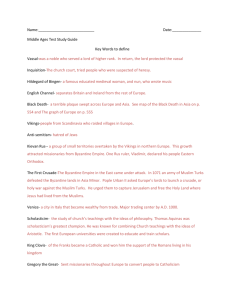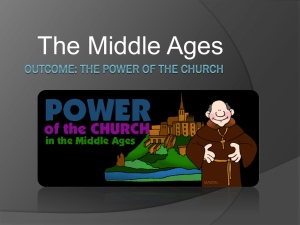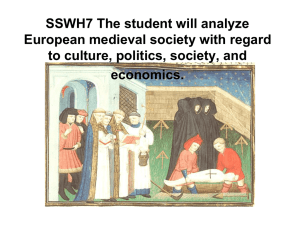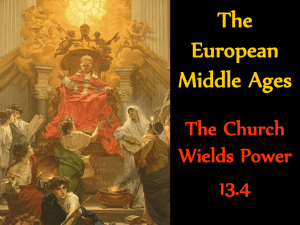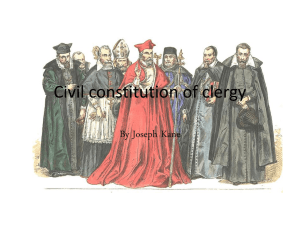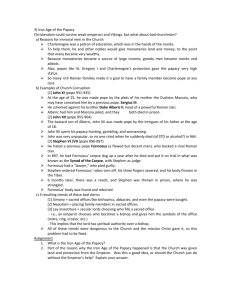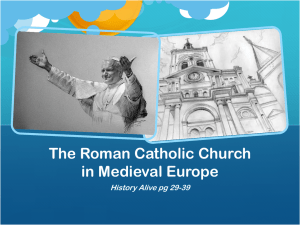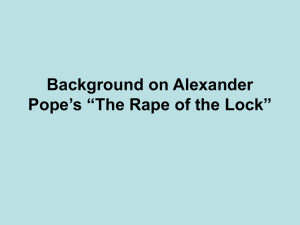Middle Ages Power of the Church
advertisement
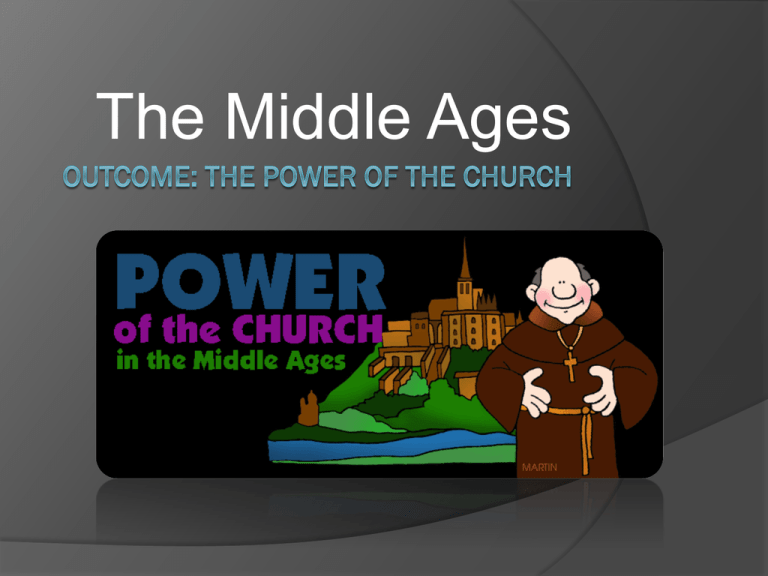
The Middle Ages The Power of the Church 1. Christianity in the early Middle Ages a. b. c. d. e. By 600, Christianity had spread to many Germanic peoples Missionaries risked their lives to spread Christianity Attacks by Muslims spurred people to convert to Christianity The Christian Church became more secular, or worldly---> Involved in politics Pope Gregory I used church revenues to raise armies, repair roads, and help the poor The Power of the Church 2. Monasteries a. Religious communities for men. Men were called monks b. Gave up possessions and devoted a life to serving God c. Women, or nuns, lived in convents d. St. Benedict wrote a book setting a practical set of rules for monasteries e. Best place for an education The Power of the Church 3. Far-Reaching Authority of the Church a. The Church sought to influence spiritual and political matters when it crowned Charlemagne Roman Emperor in 800 b. Pope Gelasius I suggested that God had created two swords: i. ii. iii. iv. v. One sword was religious ----> held by pope One sword was political ----> held by the emperor Pope bows to emperor in political matters Emperor bows to pope in spiritual matters If each kept authority in own realm, the two could live in harmony The Power of the Church c. Structure of the Church iii. Different ranks of clergy, or religious officials Pope was head of Church All clergy, including bishops and priests fell under pope’s authority iv. For most people, local priests served as the main contact with the Church i. ii. The Power of the Church d. Religion as a Unifying Force i. ii. iii. iv. v. Feudalism created division but Church teachings bonded them together Provided people with a sense of security and of belonging to a religious community Priests and other clergy administered sacraments (religious ceremonies) All were subject to canon law, or Church Law This included matters such as marriage or religious practices because the Church was both religious and political The Power of the Church 4. The Emperor Clashes with the Pope a. b. c. d. e. f. When Pope Leo III crowned Charlemagne emperor in 800, he unknowingly set up future conflict Otto the Great crowned king of the Holy Roman Empire in 936 Church unhappy with Otto’s use of lay investiture, ceremony where kings and nobles appointed church officials Popes would threaten with excommunication, or banishment from the Church Future kings would attempt to exert power over the papacy (pope) These attempts would weaken German provinces in Europe and weaken royal authority

